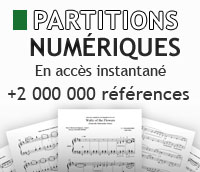Wachet! betet! betet! wachet! (Watch! Pray! Pray!
Watch!) is the title of two church cantatas by Johann
Sebastian Bach. He composed a first version, BWV 70a,
in Weimar for the second Sunday in Advent of 1716 and
expanded it in 1723 in Leipzig to BWV 70, a cantata in
two parts for the 26th Sunday after Trinity.
On 2 March 1714 Bach was appointed concertmaster of the
Weimar court capelle of the co-reigning dukes Wilhelm
Ernst and Ernst August of Saxe-Weimar. As
concertmaster, he assumed t...(+)
Wachet! betet! betet! wachet! (Watch! Pray! Pray!
Watch!) is the title of two church cantatas by Johann
Sebastian Bach. He composed a first version, BWV 70a,
in Weimar for the second Sunday in Advent of 1716 and
expanded it in 1723 in Leipzig to BWV 70, a cantata in
two parts for the 26th Sunday after Trinity.
On 2 March 1714 Bach was appointed concertmaster of the
Weimar court capelle of the co-reigning dukes Wilhelm
Ernst and Ernst August of Saxe-Weimar. As
concertmaster, he assumed the principal responsibility
for composing new works, specifically cantatas for the
Schlosskirche (palace church), on a monthly schedule.
Bach originally wrote this cantata in his last year
there, for the Second Sunday of Advent.
The prescribed readings for the Sunday were from the
Epistle to the Romans, call of the Gentiles (Romans
15:4–13), and from the Gospel of Luke, the Second
Coming of Christ, also called Second Advent (Luke
21:25–36). The cantata text was provided by the court
poet Salomon Franck, published in Evangelische Sonn-
und Fest-Tages-Andachten in 1717. Bach wrote five
movements, a chorus and four arias, and concluded with
the fifth verse of the chorale "Meinen Jesum laß ich
nicht" by Christian Keymann.
Bach first performed the cantata on 6 December
1716.
In Leipzig, Advent was a quiet time (tempus clausum),
thus no cantata music was performed in services from
Advent II to Advent IV. In order to use the music
again, Bach had to dedicate it to a different
liturgical event and chose the 26th Sunday after
Trinity with a similar theme. The prescribed readings
for this Sunday were from the The Second Epistle of
Peter, "look for new heavens and a new earth" (2 Peter
3:3–13), and from the Gospel of Matthew, the Second
Coming of Christ, also called Second Advent (Matthew
25:31–46). An unknown poet kept the existing
movements and added recitatives and a chorale to end
part 1 of the new cantata, the final verse of "Freu
dich sehr, o meine Seele" by Christoph Demantius.
Bach performed the extended cantata first on 21
November 1723, and a second time on 18 November
1731.
Bach shaped the opening chorus in a da capo form and
used a technique to embed the vocal parts in the
concerto of the orchestra. A characteristic trumpet
calls to wake up, initiating figurative movement in the
other instruments and the voices. The choir contrasts
short calls "Wachet!" and long chords "betet!".
All instruments accompany the recitative, illustrating
the fright of the sinners, the calmness of the chosen
ones, the destruction of the world, and the fear of the
ones called to be judged.
Part I is closed by the final verse of "Freu dich sehr,
o meine Seele" in a four-part setting.
The recitative in movement 9 opens with a Furioso
depicting the "unerhörten letzten Schlag" (the
unheard-of last stroke), while the trumpet quotes the
hymn "Es ist gewisslich an der Zeit" (Indeed the time
is here). This chorale had been used as kind of a Dies
irae during the Thirty Years' War. The recitative ends
on a long melisma on the words "Wohlan, so ende ich mit
Freuden meinen Lauf" (Therefore I will end my course
with joy). The following bass aria begins immediately,
without the usual ritornello, molt' adagio. After this
intimate reflection of the thought "Jesus führet mich
zur Stille, an den Ort, da Lust die Fülle." (Jesus
leads me to quiet, to the place where pleasure is
complete) the closing chorale is set richly for seven
parts, independent parts for the upper three strings
forming a "halo" for the voices.
The instrumentation of the Weimar cantata is lost. The
cantata in two parts of 7 and 4 movements was
originally scored in Leipzig for soprano, alto, tenor,
and bass soloists, a four-part choir, trumpet, oboe,
bassoon, two violins, two violas, and basso
continuo.
Source: Wikipedia
(https://en.wikipedia.org/wiki/Wachet!_betet!_betet!_wa
chet!_BWV_70).
I created this arrangement of the Soprano Aria: "Laßt
der Spötter Zungen schmähenfor" (Let the tongues of
the mockers scorn) for Flute, Violin & Cello.














